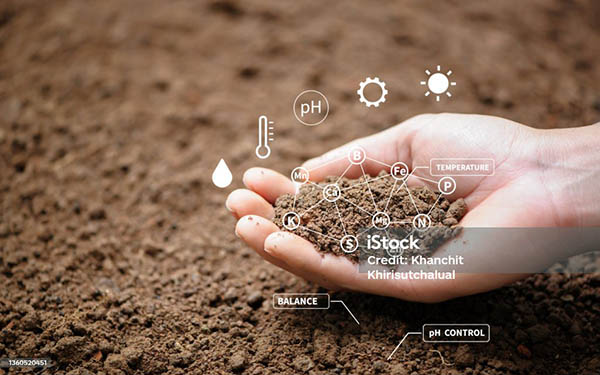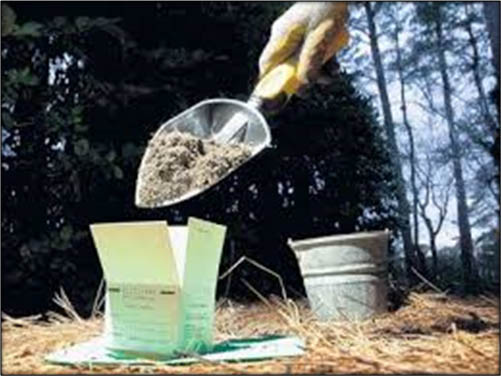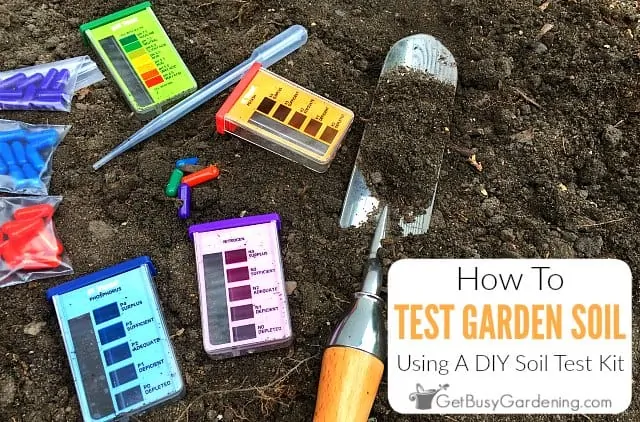by Barbara S. Hanson, Suffolk Master Gardner
Healthy plants need healthy soil in which to grow. If your garden seems lackluster and you’re having trouble keeping plants at their best, the problem could be with your soil!

Why test the soil?
Plants are able to produce their own energy, but also require a good fertile soil or growth media to supply the plant(s) with nutrients which they need to thrive. When plants are well-fed they are better able to compete with weeds and to withstand diseases and insects. Plant growth and vigor are often dependent on soil pH, the measurement of how acidic or alkaline the soil is. Soil pH is measured on a scale of 1-14 with a measurement of 7.0 considered neutral. A number below 7 is acidic(sour): a number above 7 is alkaline(sweet). Most plants prefer soil with a pH of 6.2-7.2. A soil test also indicates which elements are missing from your soil and how much to add to remedy the problem.

When is the best time to take soil samples?
Take a soil sample a few months before initiating any new landscaping—whether it be seeding a lawn, starting a vegetable garden, putting in a flower bed, or planting perennials. Sampling well in advance of planting will allow time for applied soil amendments to begin making the desired adjustments in soil pH or nutrient levels. Sample established areas—lawns, trees, shrubbery, and other perennials at any time of year; however, an ideal time to take samples is when the garden season has ended in the late summer to early fall. Sampling in the fall allows time for corrective pH and nutrient management before new growth starts in the spring. Fall sampling also avoids a sometimes busy spring period at the Soil Testing Laboratory, thus avoiding delays in getting your soil test results. If an established area exhibits abnormal growth or plant discoloration, take a soil sample right away. For areas recently limed or fertilized, delay sampling at least six to eight weeks.(1)
If one area of your landscape seems healthy and another area has bare or yellow areas or yields poorly, soil sampling may help to diagnose the problem. Where poor growth exists and this area is large enough to manage separately, then separate composite samples should be taken from both poor and good areas. By comparing the results, the soil test may point out troubles that exist due to a lack of, or an excess of, nutrients and/or an incorrect pH. However, it should be pointed out that other factors may have a greater influence on plant growth that will not be accounted for by a soil test. These include soil drainage, soil compaction, insects, diseases, rainfall, and other factors.(1)

Where to find soil test kits?
Soil test kits are available at your local hardware centers, nurseries or you can request a test from the Virginia Tech Soil Testing Laboratory. You will need a Soil Sample Information Sheet and a Soil Sample Box from Virginia Tech. The form is available at https://www.soiltest.vt.edu/, while both the box and the form are available from the Virginia Cooperative Extension office in your county or city. Local offices can be found at https://ext.vt.edu/offices.html
Soil samples at the Virginia Tech Soil Testing Laboratory are usually analyzed within one week of the time they are received. However, in early spring, processing the sample and mailing you your results may take two weeks due to the large number of samples sent in by farmers at this time.
The Soil Testing Laboratory will provide you with information on the availability of nutrients in your soil. The routine soil test costs $10 (cost subject to change). The test measures and makes recommendations for the following major nutrients: P (phosphorus); K (potassium); Ca (Calcium); Mg (Magnesium) and five micronutrients. In addition, the routine test determines the soil pH and makes recommendations on how to raise or lower the pH. Less frequently needed tests that are available at an additional cost include organic matter and soluble salts.
When testing is complete, a report is either emailed or mailed to you and an electronic copy is available to the Agriculture Extension Agent for your county or city. Supplemental notes are mailed with the report and are also available online at https://www.soiltest.vt.edu. The notes explain the technical terms used in the report and provide extra details on fertilizer application schedules and rates for specific kinds of plants. Feel free to contact your Extension Agent for more help on sampling, interpreting soil test results, and understanding how to implement them. The phone number for your local Extension office appears on the upper left of your report.
